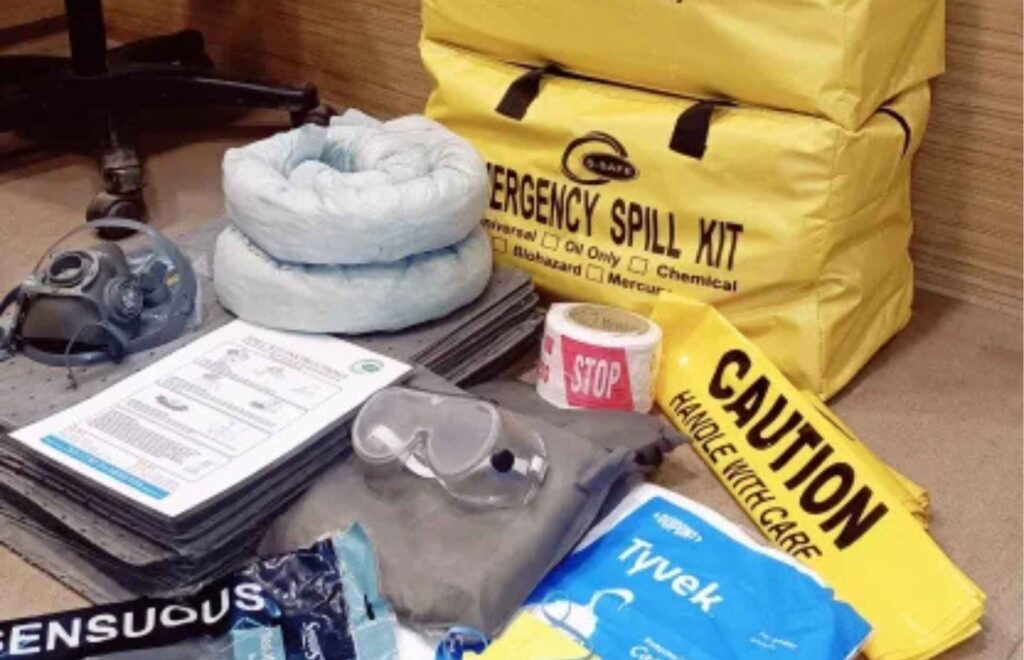material on hand makes all the difference.In this guide, we’ll explore the best industrial absorbent pads and granules for hydraulic oil cleanup, how to choose between them, and how they differ Hydraulic oil spills can create serious safety hazards—especially in busy workshops, factories, or construction zones. Whether it’s a fresh leak or routine maintenance, having the right absorbent from common household options like kitty litter.
Why You Should Use Specialized Absorbents for Hydraulic Oil
Hydraulic fluid is thicker and more persistent than other oils. It clings to surfaces, seeps into porous concrete, and creates slip hazards fast.
Ordinary cleaners like dish soap or pressure washing alone won’t solve the issue. That’s why industrial-grade absorbents are key for both surface and deep concrete spills.
👉 Want to know how to handle the entire cleaning process? Check out:
How to Remove Hydraulic Oil from Concrete
Types of Absorbents: Pads vs Granules

Absorbent Pads
- Made from polypropylene or cellulose
- Come in sheets, rolls, or mats
- Ideal for surface-level spills on sealed concrete or shop floors
Pros:
- Quick and easy to use
- No mess or sweeping
- Great for preventive placement under leaky machines
Cons:
- Not effective for stains that have already soaked into unsealed concrete
Absorbent Granules
- Loose materials such as clay, diatomaceous earth, or synthetic blends
- Spread over the spill and swept up after absorption
Pros:
- Works better for uneven or porous surfaces
- Ideal for unsealed concrete and driveways
- Can absorb deeper penetration of oil
Cons:
- Requires cleanup and proper disposal
- Dusty if overused indoors
👉 Already dealing with an old stain? You might need more than just granules:
How to Remove Set-In Hydraulic Oil Stains from Unsealed Concrete
Top Recommended Products
Here’s a quick look at some industry-trusted absorbents for hydraulic oil:
| Product Name | Type | Best Use |
| Oil-Dri Premium | Granules | Driveways, rough concrete |
| Pig Mat Pads | Pads | Workshops, under machinery |
| SpillTech Oil-Only Socks | Tubular Pads | Around machine bases |
| Floor-Dry (Clay) | Granules | Small shops, outdoor oil spots |
How to Use Absorbents Effectively
- Contain the spill immediately
- Cover the affected area with pads or a thick layer of granules
- Let it sit for 20–60 minutes depending on the oil volume
- Sweep, bag, and dispose safely according to local environmental guidelines
👉 For long-term protection after cleanup, see:
How to Prevent Motor Oil Stains on Your Driveway or Garage Floor
Storage Tips: Be Spill-Ready
- Keep absorbent kits near hydraulic equipment
- Use wall-mounted pad dispensers in workshops
- Store granules in airtight bins to avoid moisture contamination
This isn’t just about cleanup—it’s about safety and response preparedness.
FAQs – Choosing and Using Oil Absorbents
Q1: Can I use kitty litter instead of industrial granules?
Yes, but it’s less effective. Industrial granules are engineered for oil absorption and often absorb more, faster, with less mess.
Q2: Are absorbent pads reusable?
Some high-end pads are washable, but most are single-use. Always check the product label.
Q3: What if oil has already stained the concrete?
Absorbents help remove surface oil. For stains, you’ll need a degreaser and scrub method. Read this next:



